Viral mosaic: types of disease and ways to fight
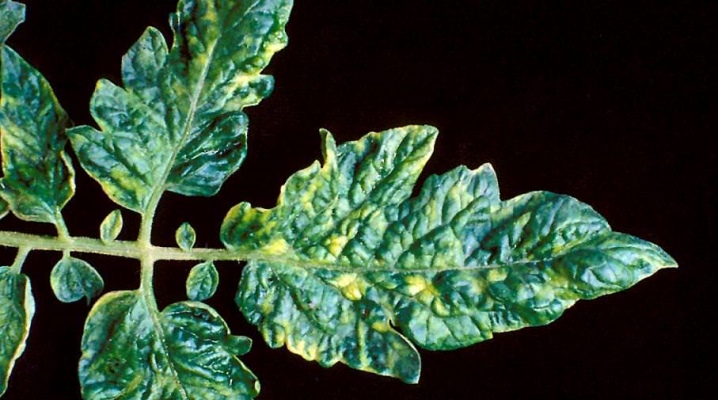
Mosaic is one of the most dangerous diseases caused by viruses. In order to overcome this disease, it is necessary to determine exactly what kind of virus affects the culture. After that, you must immediately begin to fight it.
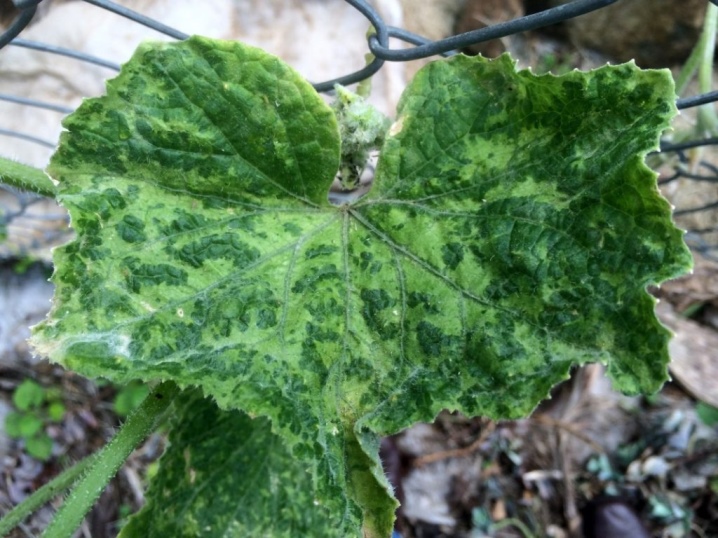
Description and types of disease
The tobacco mosaic virus is very difficult to confuse with any other disease. The disease was first discovered in the 19th century. This viral disease was discovered by Dmitry Ivanovsky. An unknown disease was discovered on plantations where tobacco was grown. That is why it was named tobacco mosaic.
You can find out this disease by the following signs:
- specks of different colors and sizes appear on the foliage, resembling pieces of a mosaic;
- the sheet plate is deformed;
- the plant develops slowly;
- young shoots gradually dry up;
- brown spots and rot appear on the surface of the fruit.
You cannot eat the fruits of plants infected with viral diseases.

In a biology textbook, you can find several types of this disease.
Ordinary mosaic
The causative agent of this disease is the "C" virus. Signs of infection appear immediately. A large number of small green-yellow spots appear on the leaves of plants. A little later, they become wrinkled. The plant stops growing and the flowers begin to wither. The fruits are covered with "warts".
Most often, this disease affects eggplants, cucumbers and zucchini. The carrier of this disease is aphids.
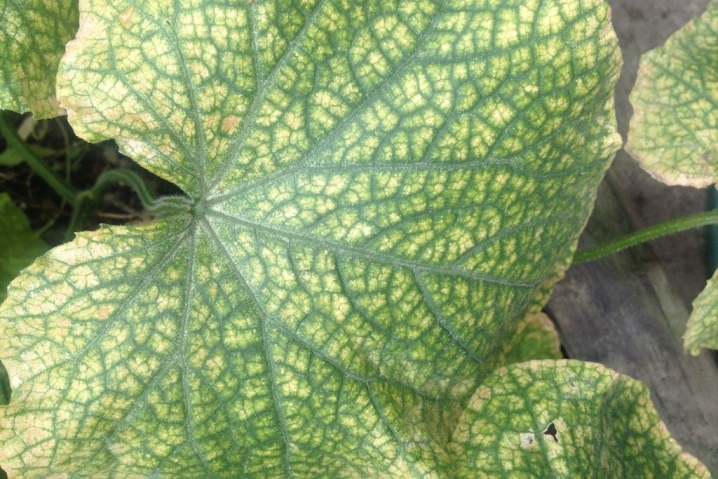
Speckled green mosaic
Outwardly, this type of mosaic is similar to an ordinary one. But this disease is more resistant to existing forms of treatment, and therefore more dangerous. Most often, the disease affects cucumbers and pumpkins.
Mosaic white
This disease affects plants grown in greenhouse conditions. Spots of yellow or white color appear on the leaves of peppers, cabbage or tomatoes. By their shape, they resemble an irregular asterisk. In this case, the affected foliage does not change its shape. But the fruits eventually become covered with yellow stripes.
The virus can persist for a long time either in plant debris or in seeds.
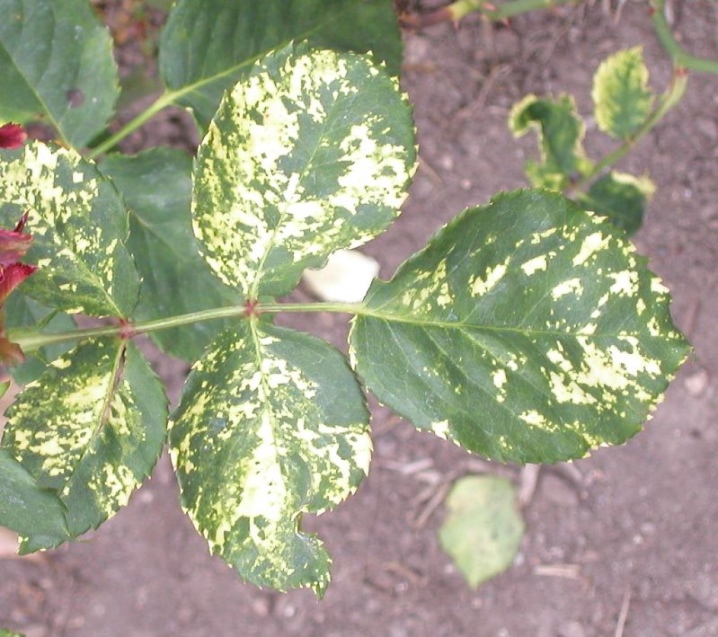
Subcutaneous mosaic spot
It most commonly affects fruit trees such as pears, plums or apple trees. At the very beginning of the disease, the bark of trees is covered with cracks, and the leaves are stained. A little later, the fruits begin to deform.
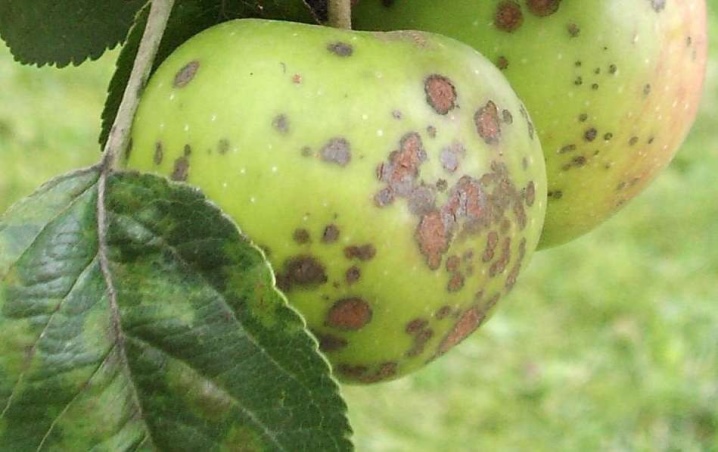
Flower mosaic
This disease most often affects roses. After infection with this disease, the structure of the flower leaves and shoots changes. The buds wither and begin to lose their petals. The flower mosaic spreads quite quickly, so it is very dangerous.
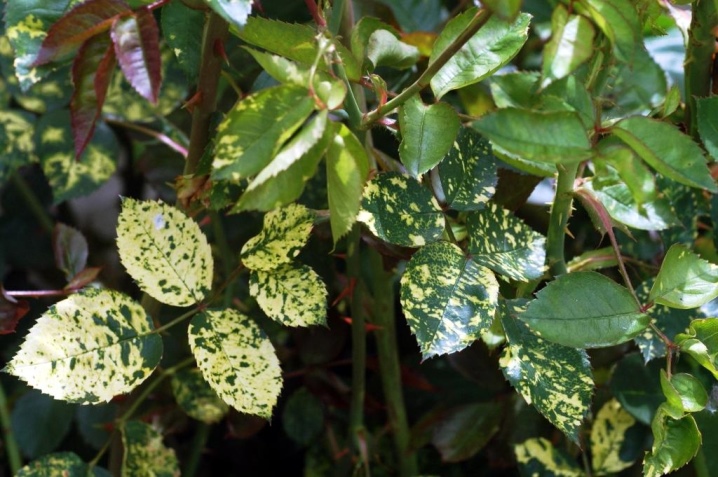
Vein mosaic
This viral disease most commonly affects berry bushes such as raspberries, black currants or gooseberries. After infection, the leaves of plants begin to curl, and the veins on them brighten. And also yellow spots appear on their surface.
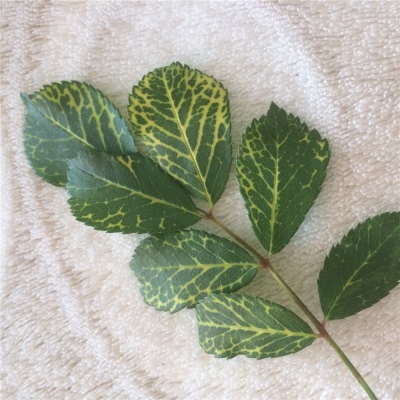
Striped mosaic
This type of virus usually infects potatoes. Dark spots appear on the lower leaves, and thin stripes appear on the veins. Over time, the leaves begin to fall off, and the stems dry out. Potato fruits lose their taste.
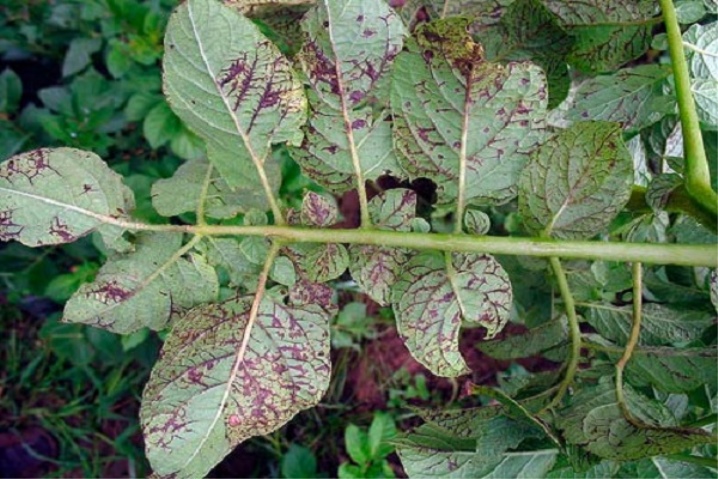
Reasons for the appearance
There are different ways to infect plants with viral mosaics. The disease can occur when:
- use for sowing seeds infected with the virus;
- selection of diseased cuttings, rootstocks and scions;
- picking, transplanting or pinching plants;
- if the juice of contaminated crops gets on the tools;
- the presence of pests in the soil that can spread this virus from seedling to seedling.
The disease infects bushes and vegetables faster than trees. Older plants are more susceptible to this disease than young ones.
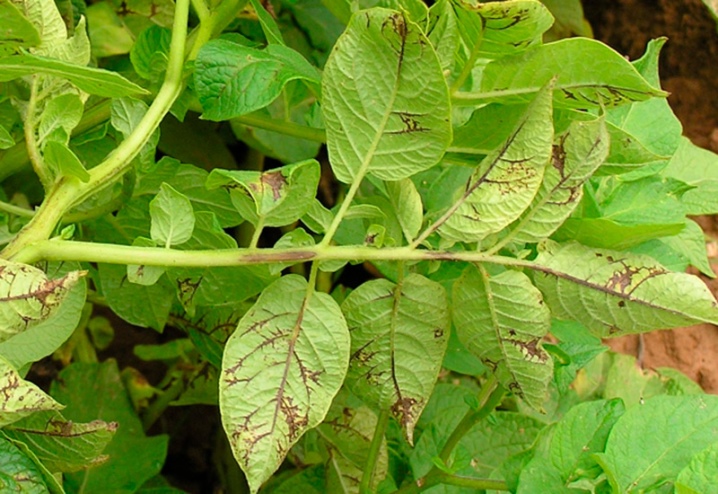
Treatment methods
It is necessary to deal with the mosaic quickly, using the most effective means. This is the only way to save infected plants.
As a rule, trees or bushes are treated with various chemicals. You can use "Carbosulfan", "Fitosporin", "Cypermethrin" or "Fufanon". It is best to process the prepared mixtures early in the morning or late in the evening, when the sun is not shining.
If the plants are very badly affected, it is no longer possible to save them. All that remains is to destroy the infected bushes or branches in order to prevent further spread of the disease. Diseased plants must be burned along with a clod of earth on the roots.

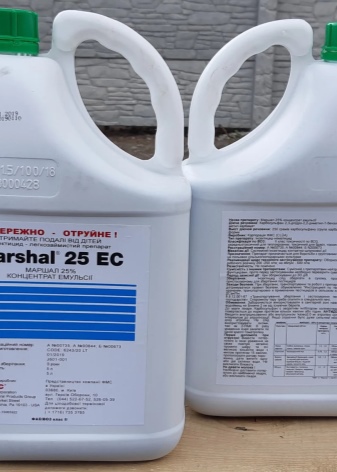
Prevention measures
Don't forget about prevention. After all, it is much easier to prevent infection of the site than to fight the disease.
- First of all, you need to choose healthy seeds and seedlings for planting. In no case should they be infected with the disease. It is recommended to disinfect the seeds before planting. They can be processed both with chemicals and with a solution of potassium permanganate.
- Planting on your site is those plant varieties that are resistant to such diseases. Vegetable crops should be planted so that there is enough free space between the bushes.
- After harvesting, all plant residues must be burned.
- All weeds must be removed regularly. Often they are the main carriers of the disease.
- The equipment used in the work must be disinfected, as well as the boxes in which the seedlings are grown. For this, 2 tablespoons of potassium permanganate and 4 tablespoons of copper sulfate are diluted in a liter of water. The tools are soaked in the solution for half an hour. If the plants are grown in a greenhouse, the walls must also be disinfected at the end of the season.
- In the aisles, it is necessary to plant plants or flowers that scare away harmful insects.
- For plants to be healthy and resistant to disease, they need to be well fed, using alternately organic and mineral fertilizers.
The viral mosaic is a dangerous disease. It is very difficult to deal with it, and in some cases it is completely impossible. That's why, noticing signs of infection of the site, you should not let everything take its course. We must immediately begin to actively combat this disease and then nothing will threaten the crop.
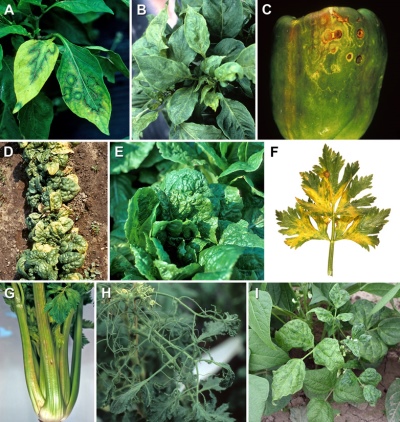













The comment was sent successfully.